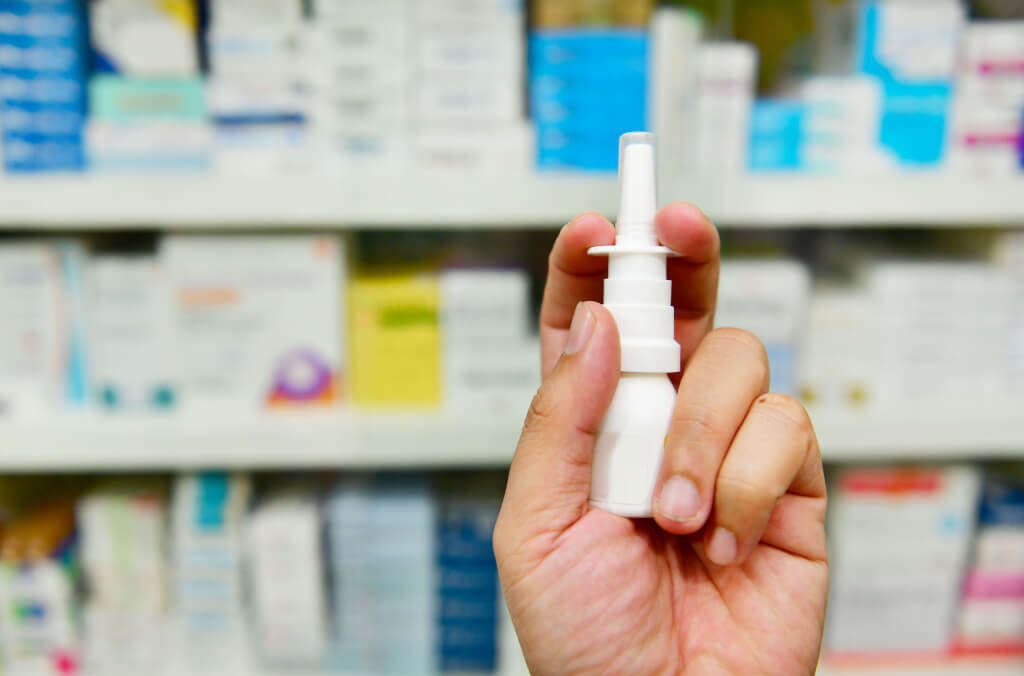Narcan is an FDA-approved medication used to assist someone who has overdosed on opioids. A brand name for the medication Naloxone, it is administered via a nasal spray. Narcan requires a prescription to purchase. Learning how to administer Narcan can save lives.
The Narcan website states that its nasal spray should be “used for the treatment of a known or suspected opioid overdose emergency with signs of breathing problems and severe sleepiness or not being able to respond.”
Considered a “rescue drug”, a person without medical training can administer Naloxone to someone who may have overdosed on opioids. How to administer Narcan is as simple as using a regular nasal spray.
Drugs designated as opioids include:
- Heroin
- Methadone
- Morphine
- Fentanyl
- Oxycodone
- Hydromorphone
- Hydrocodone
How to Administer Narcan
Narcan recommends a dosage be given immediately after signs of an opioid overdose begin. The answer to how to administer Narcan is simple. There are three easy steps:
- Peel back the packaging to remove the device. Hold the device with your thumb on the bottom of the red plunger and two fingers on the nozzle.
- Place and hold the tip of the nozzle in either nostril until your fingers touch the bottom of the patient’s nose.
- Press the red plunger firmly to release the dose into the patient’s nose.
Once the dosage has been administered, it is recommended the recipient receive immediate emergency medical care. Performing CPR while waiting for medical help to arrive can prove helpful.
A person who has received a dosage of Narcan nasal spray may appear to improve at first. If they begin to exhibit new signs of an overdose, wait two to three minutes and administer another dosage. The subsequent dosage should be given from a new Narcan device.
A person who has been revived by the use of Narcan may resist the idea of getting professional medical help. Let them know that being examined by a medical professional is the only way to monitor the side effects of the overdose.
Who Should Carry Narcan With Them?
Medical and law enforcement employees often keep Narcan on hand when on the job. They typically have received training in its usage. It comes in handy when someone they encounter while they work has overdosed on opioids.
Family members, close friends, and caregivers of someone who has a known opioid addiction may want to get Narcan. Harm reduction organizations and some medical staff offer training to the general public on how to use the product to help them learn how to administer Narcan.
The makers of Narcan recommend administering the product when a person exhibits symptoms of an opioid overdose, which can include slow or shallow breathing exhibited by someone who proves difficult to wake up or appears to have stopped breathing. It can also include excessive sleepiness in a person who cannot be woken up by loud voices or noises or by rubbing them firmly in the middle of their chest. Or, it can include the black circle in the center of their pupil (the colored part of their eye) appears very small.
Talking to Your Doctor About Getting a Prescription for Narcan
If you are concerned that you may suffer from an opioid overdose, talk to your doctor about getting a prescription for Narcan. Make sure you inform your doctor about all medications you take, including over-the-counter, prescription, and vitamins. Go over your medical history, including any heart-related problems.
Let your doctor know if you are pregnant or thinking about becoming pregnant. A fetus that is exposed to Narcan should be given a medical exam immediately. Also, let your doctor know if you are breastfeeding. The risks of passing along Narcan via breast milk have yet to be determined.
Narcan should not be used by someone who is allergic to naloxone hydrochloride.
Side Effects From Narcan Usage
Usage of Narcan can trick the body into going into opioid withdrawal. Side effects that can occur include:
- Elevated heart rate
- Increased blood pressure
- Body aches
- Fever
- Nausea or vomiting
- Stomach cramps
- Diarrhea
- Sweating
- Shaking
- Aggressive behavior
- Restlessness
- Irritability
- Feeling weak
Alternatives to Narcan
While the purchase of Narcan requires a prescription, almost all states allow Naloxone to be sold without a prescription. Many major chain pharmacies sell it, such as CVS and Walgreens. The prevalence of opioid overdoses helped expand policies meant to help those who suffer from opioid addiction. This new openmindedness also benefits those who administer Naloxone to someone. They can do so without fear of legal consequences.
Some states that still require a prescription for Naloxone allow pharmacists to write one. Checking with state laws and local pharmacies will provide answers on how best to go about getting Naloxone. Many insurance plans cover the cost of Naloxone or offer it with a small co-payment. Coupons may also be found online.
Evzio is the brand name of an FDA-approved prescription drug used to counteract the effects of an opioid overdose. Evzio delivers a single dose of Naloxone through a hand-held auto-injector. It can be used by non-medical professionals.
Treatment for Opioid Addiction in California
The opioid crisis has gripped the country for years, creating a need for professional treatment programs to help people recover. MD Home Detox will provide you with compassionate detoxification in the comfort of your own home. They provide round-the-clock nursing care and the option to enjoy the benefits of a sober companion to guide you in your recovery.
Call (888) 592-8541 or click here to email them. Let them help you leave opioid addiction behind and embrace a new, healthy life.

